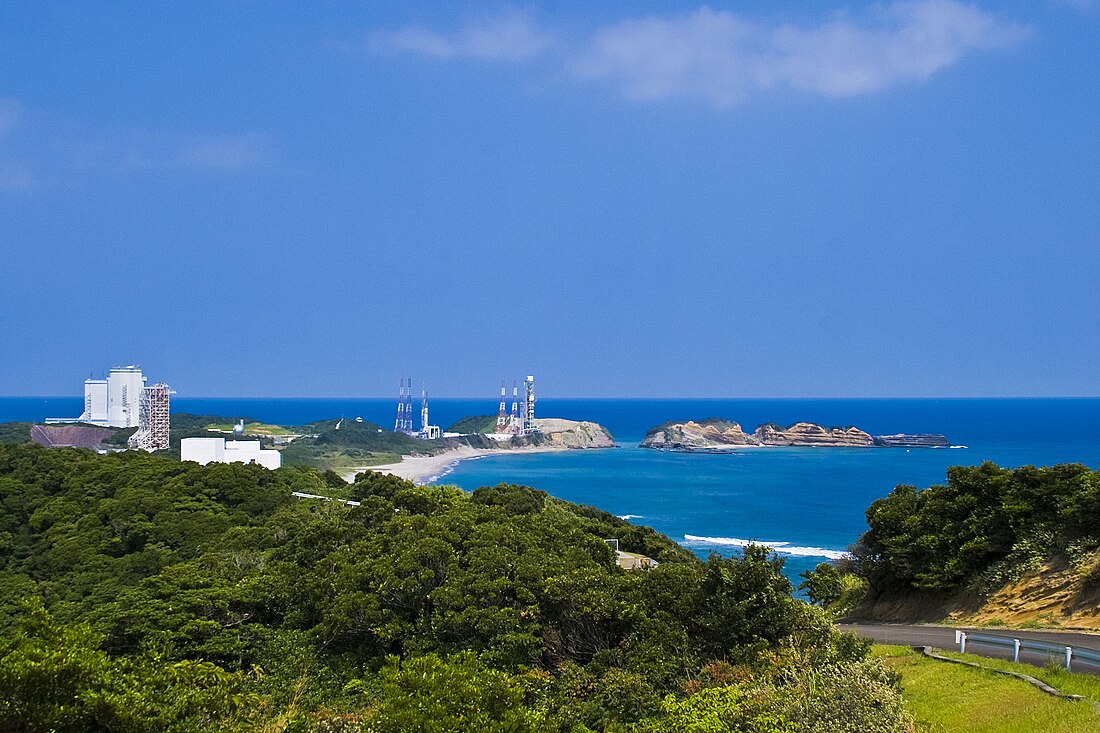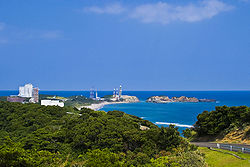Top Qs
Timeline
Chat
Perspective
Tanegashima Space Center
Rocket-launch complex in Japan From Wikipedia, the free encyclopedia
Remove ads
The Tanegashima Space Center[a] (TNSC) is Japan's primary spaceport, covering approximately about 9.7 million square metres (2,400 acres; 970 ha).[1] It is located on the southeastern tip of Tanegashima, the easternmost of the Ōsumi Islands, approximately 40 kilometers (25 mi) south of the major island of Kyushu.
You can help expand this article with text translated from the corresponding article in Japanese. (June 2012) Click [show] for important translation instructions.
|
The site was selected on May 24, 1966, and construction began later that year on September 17. Exactly two years later, on September 17, 1968, it hosted its first launch, a small rocket. The facility officially opened on October 1, 1969, coinciding with the establishment of its initial operator, the National Space Development Agency of Japan (NASDA).
Now operated by the Japan Aerospace Exploration Agency (JAXA) since its formation in 2003, TNSC is responsible for satellite assembly, as well as launch vehicle testing, launching, and tracking.
Remove ads
Facilities
Summarize
Perspective
On-site main facilities include:[2]
- Yoshinobu Launch Complex
- Osaki Launch Complex (retired)
- Vehicle Assembly Building (VAB)
- Second Spacecraft Test and Assembly Building
- Takesaki Range Control Center
Those facilities are used for performing operations from assembling launch vehicles, maintenance, inspections, final checks of satellites, loading satellites onto launch vehicles, rocket launches, and tracking launch vehicles after liftoff. The TNSC plays a pivotal role in satellite launches among Japan's space development activities.
Orbital launches take place from the Yoshinobu Launch Complex, lifting off from its two launch pads:
The H-IIA first stage engine, the LE-7A, was test-fired at the Yoshinobu Firing Test Stand. Auxiliary buildings are in place for the assembly of new spacecraft and for radar and optical tracking of launched spacecraft.
The older Osaki Launch Complex was retired in 1992. It was used for the launch and development of N-I, N-II, H-I and J-I rockets.
The Space Science and Technology Museum is near TNSC. It offers a view of rocket history and technology in Japan.
- Yoshinobu LP-1
- The launch of H-IIA Flight 11 (ETS-VIII) from LP-1, 2006
- H-IIA Flight 13 (Kaguya) launching KAGUYA from LP-1, 2007
- H-IIA Flight 23 (GPM) rollout to LP-1, 2014
- H-IIA Flight 23 (GPM) at LP-1, 2014
- H-IIA rocket at the VAB
- Yoshinobu LP-2
- HI-IIB Flight 8 (HTV-8) at LP-2, 2019
- The Space Science and Technology Museum
Remove ads
See also
- 8866 Tanegashima
- Mitsubishi Heavy Industries – Japanese multinational corporation
- Uchinoura Space Center – Japanese Spaceport
Notes
References
External links
Wikiwand - on
Seamless Wikipedia browsing. On steroids.
Remove ads











